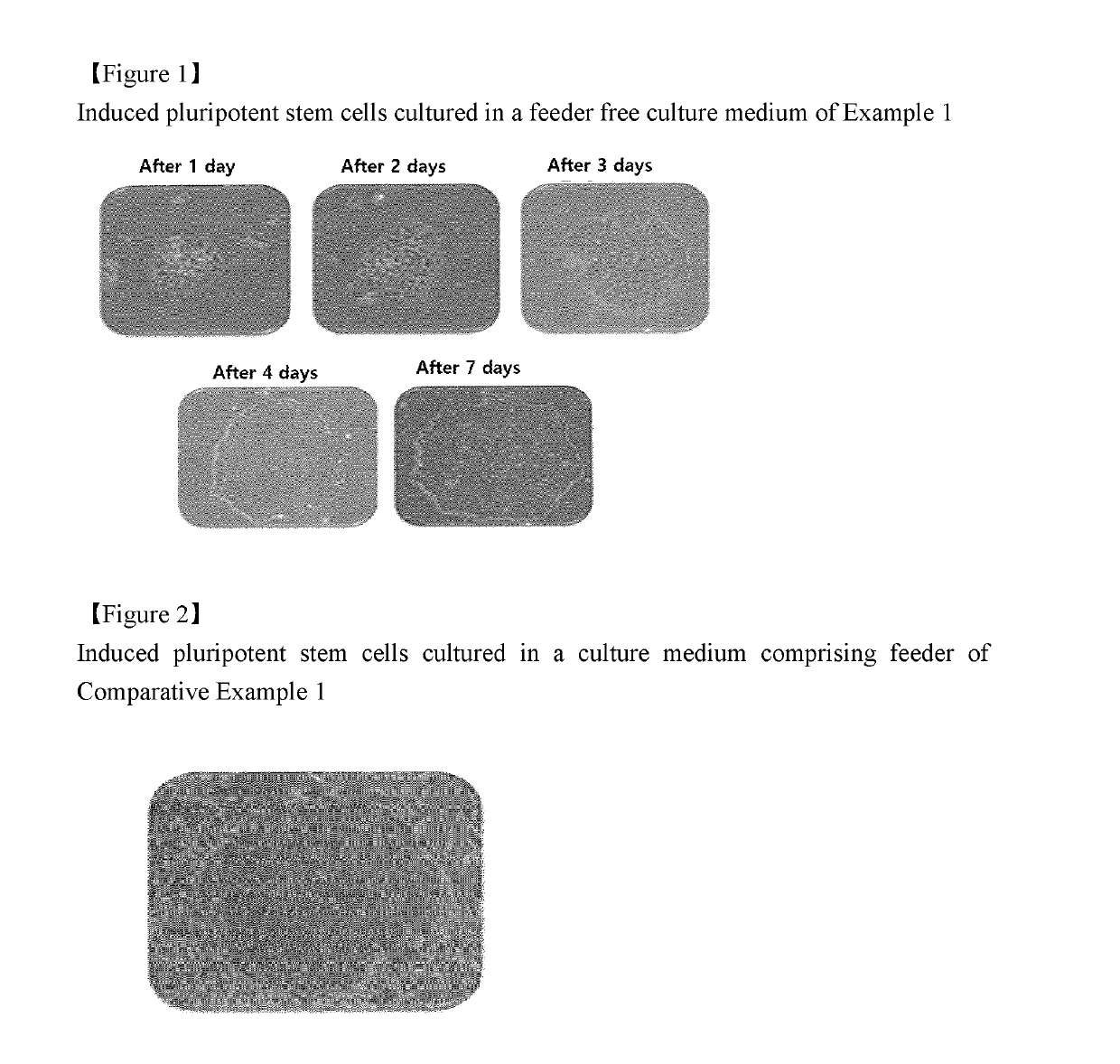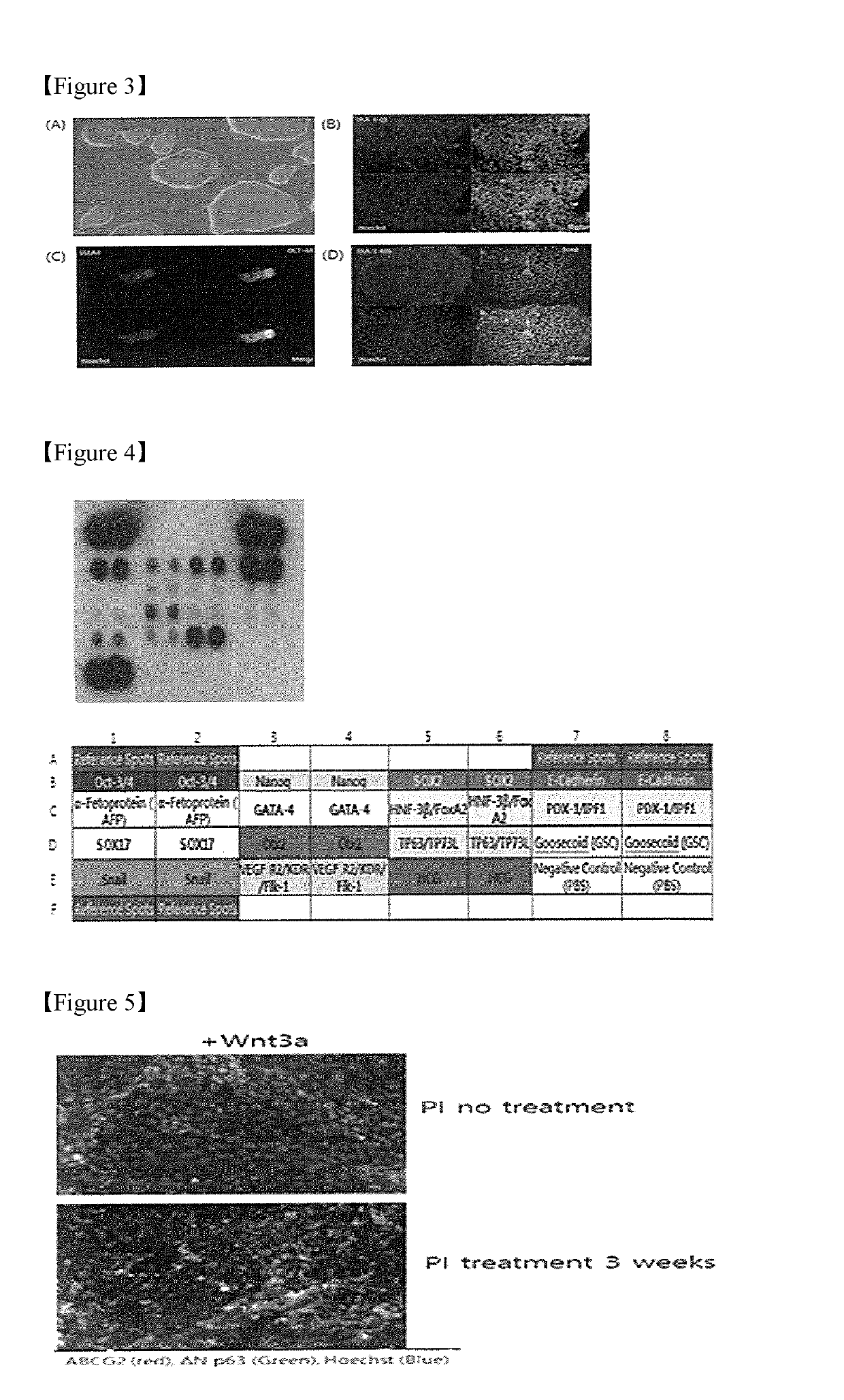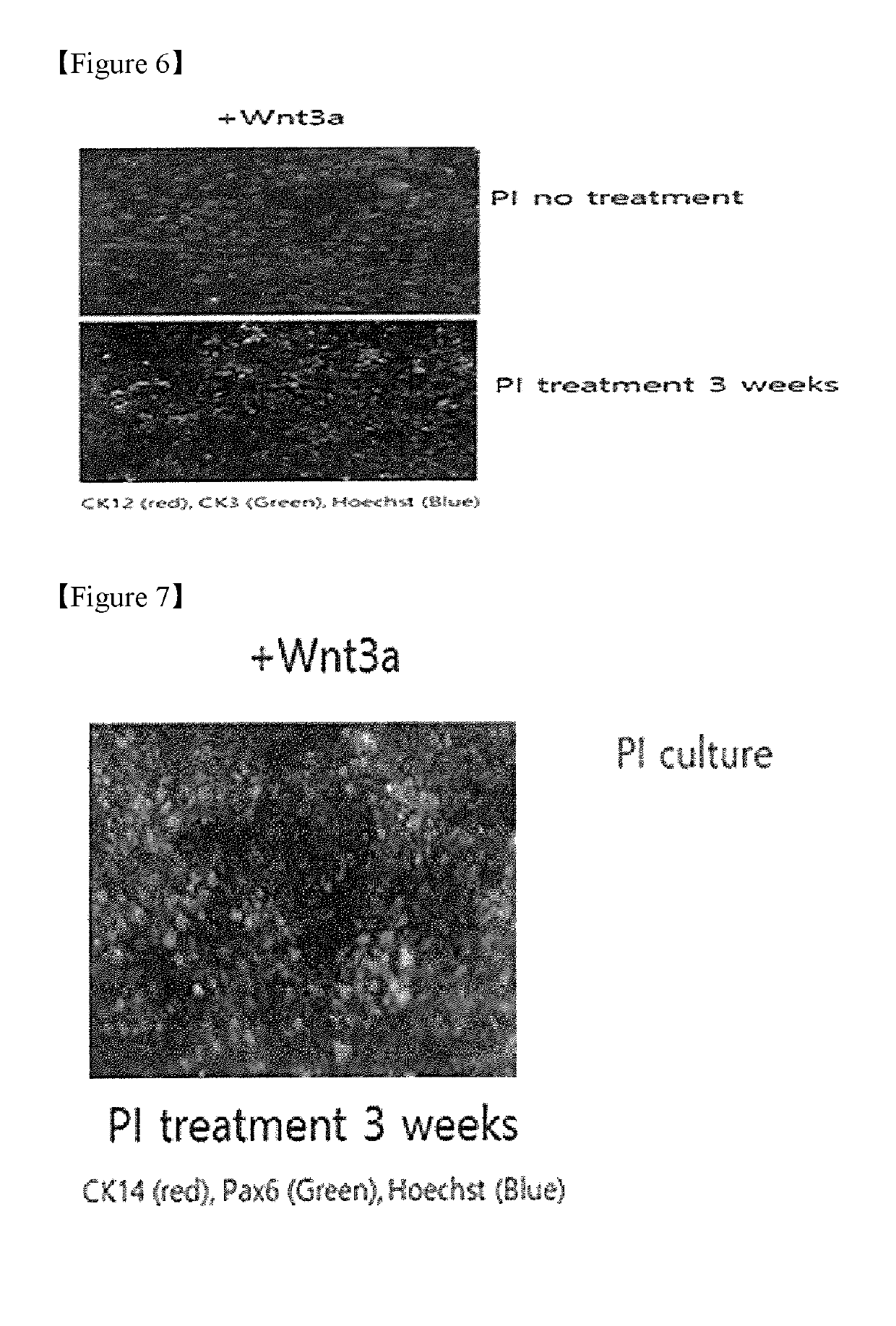Method and system for culturing corneal stem cell-like cell line by inducing differentiation of induced pluripotent stem cell using protein ligand
a technology of stem cell differentiation and protein ligand, which is applied in the field of culturing corneal stem celllike cell lines by inducing differentiation of induced pluripotent stem cells using protein ligands, can solve the problems of stem cells themselves not being used for regenerating or treating tissues, cell line-established induced pluripotent stem cells (ipsc) decline, and the possibility of cell death or cell death increases
- Summary
- Abstract
- Description
- Claims
- Application Information
AI Technical Summary
Benefits of technology
Problems solved by technology
Method used
Image
Examples
example 2
[0050]Stem cells were cultured in the same manner as Example 1 except for that the subculture fluid was used with the same composition as the PI culture fluid.
experimental example 1
[0052]The culture status of the induced pluripotent stem cells cultured in the feeder free culture medium of Example 1 and the induced pluripotent stem cells cultured in the medium comprising feeder of Comparative Example 1 were observed. The photographs of the results are shown in FIGS. 1 and 2.
[0053]FIG. 1 provides a photograph of the induced pluripotent stem cells cultured in the feeder free culture medium of Example 1 over time. FIG. 2 provides a photograph of the induced pluripotent stem cells cultured in the culture medium comprising feeder of Comparative Example 1 for 7 days.
[0054]Referring to FIGS. 1 and 2, it is shown that the induced pluripotent stem cells cultured in the feeder free culture medium of Example 1 form colonies clearly, compared to the induced pluripotent stem cells cultured in the culture medium comprising feeder of Comparative Example 1. This result shows that the induced pluripotent stem cells of Example 1 have been cultured in a uniform size and shape.
experimental example 2
[0055]The induced pluripotent stem cells cultured in the feeder free culture medium of Example 1 were immunostained with undifferentiated iPSC markers SOX2, OCT4A, SSEA4, TRA-1-81, and TRA1-60S, and identified by protein expression array. The results are shown in FIGS. 3 and 4.
[0056]First, referring to FIG. 3, the presence or absence of expression of TRA-1-81, TRA1-60S, SSEA4, OCT4A which are protein markers indicating that cultured induced pluripotent stem cells (iPSC) have stem cell characteristics were identified.
[0057]Then, referring to FIG. 4, proteins were isolated from the cultured induced pluripotent stem cell, and protein array for stem cell markers was conducted to compare protein expression aspects. As a result, the expression of SOX2 and OT3 / 4 which are markers of stem cells were identified.
PUM
 Login to View More
Login to View More Abstract
Description
Claims
Application Information
 Login to View More
Login to View More - R&D
- Intellectual Property
- Life Sciences
- Materials
- Tech Scout
- Unparalleled Data Quality
- Higher Quality Content
- 60% Fewer Hallucinations
Browse by: Latest US Patents, China's latest patents, Technical Efficacy Thesaurus, Application Domain, Technology Topic, Popular Technical Reports.
© 2025 PatSnap. All rights reserved.Legal|Privacy policy|Modern Slavery Act Transparency Statement|Sitemap|About US| Contact US: help@patsnap.com



